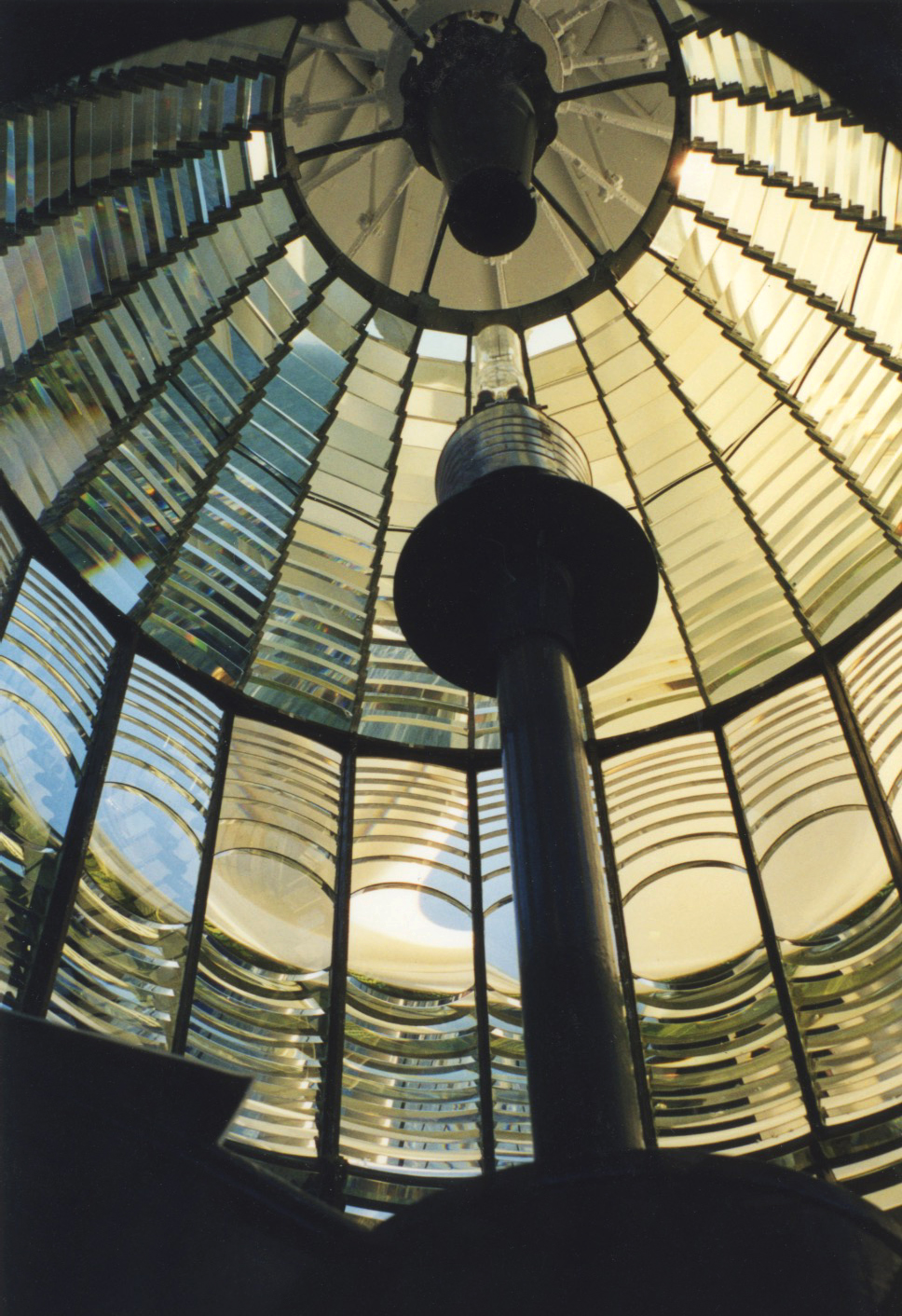TO A LIGHTHOUSE – Part II

Outside the lens
After we’ve bought our tickets, we have to scuttle to catch up with the last tour. A hundred and thirty-five steps, our guide tells us. (Earl essays them despite his bad leg.) I’m secretly grateful for the pauses at various landings while she instructs us—and try not to huff and puff too wheezily, so no one will know how out of shape I am. Now electrified, our guide explains, the lens used to be turned by a weight on a pulley that sank into a six-foot well at the base of the lighthouse. The wrought-iron steps were ordered from San Francisco, then couldn’t be assembled without help from the manufacturer because no one could figure out the numbering system—and, of course, they had to be arranged in descending—er, ascending?—order of length. They’re anchored to a wall within a wall, she continues, since wrought iron is subject to corrosion by the elements.
At the top is a Fresnel lens, designed by the French physicist in 1822. It’s like a four-ton cocoon of prisms—a thousand of them, arranged in vertical rows to magnify and bend the light of the thousand-watt bulb within. In the days before electricity, the guide informs us, the lighthouse keeper had to climb inside to cut the wicks of the oil-burning lamp and polish the prisms ceaselessly to wipe off the soot.
There are drapes half-drawn across the windows that surround us. At the Point Reyes lighthouse—where Earl and I have also been—they have to keep the drapes closed on the land side, she tells us. Otherwise, the lens would focus the sunlight like a magnifying glass and set fire to the hillside.

Inside the lens